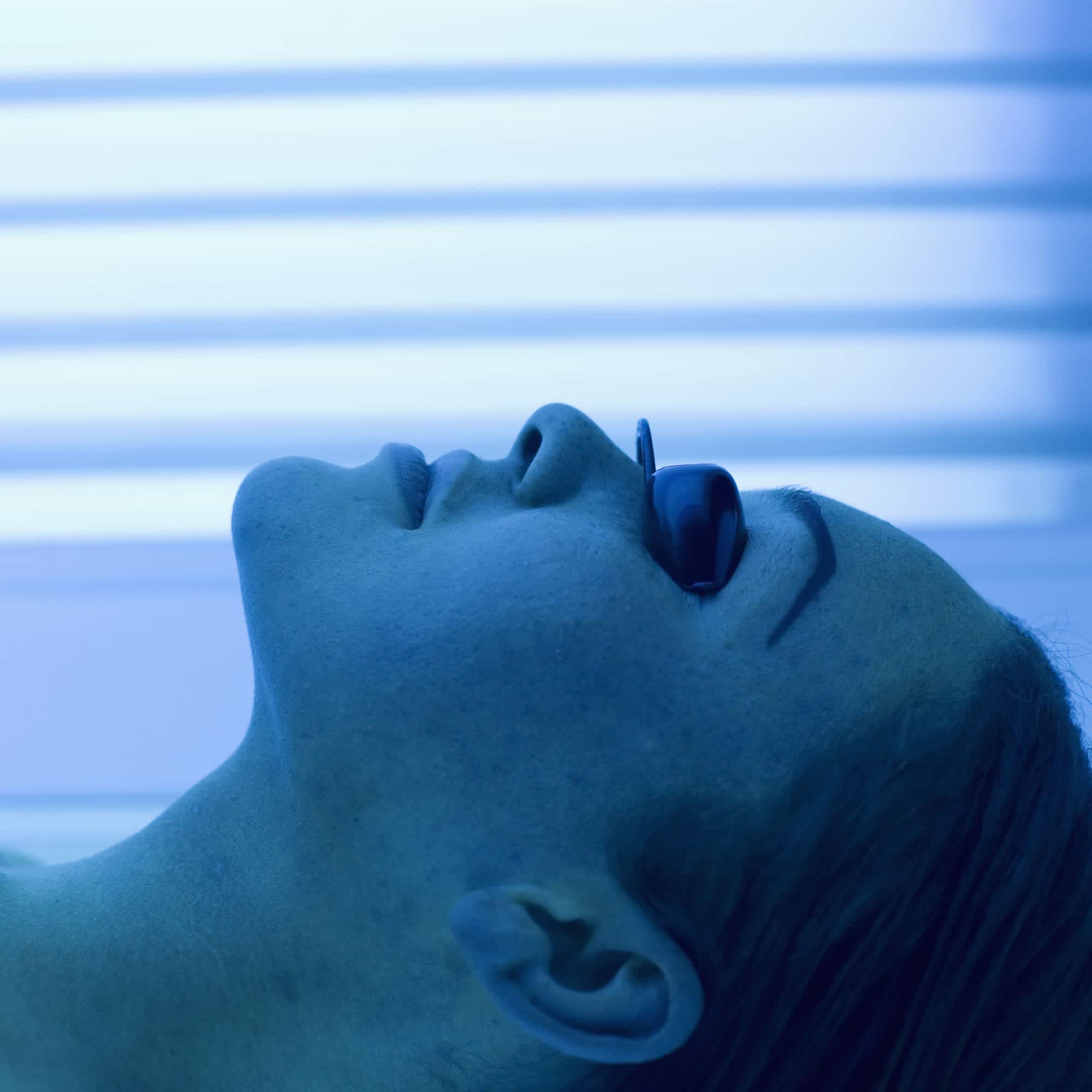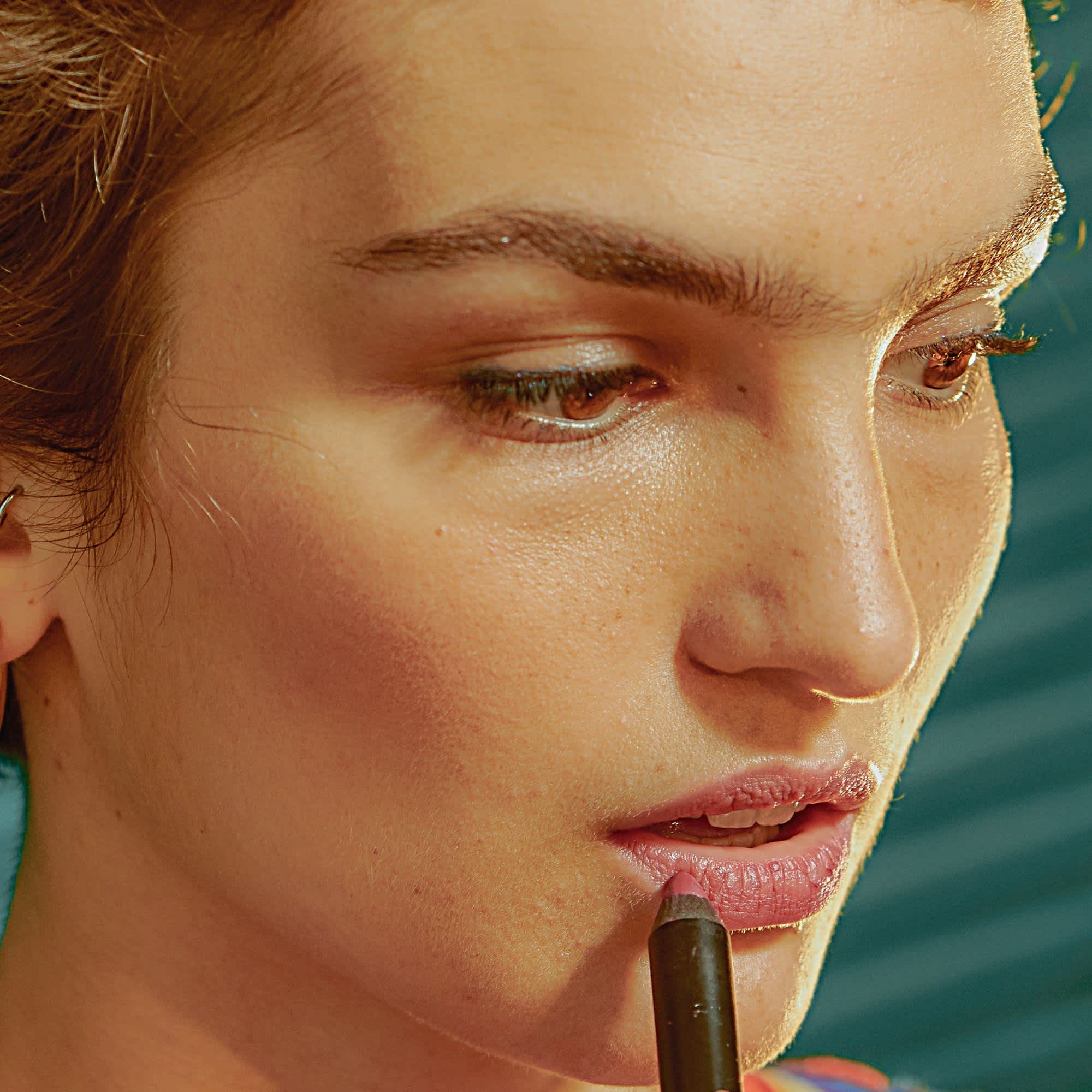
- POPSUGAR Australia
- Beauty
- Tanning Beds Are Dangerous, So Why Are They Still So Popular?
Tanning Beds Are Dangerous, So Why Are They Still So Popular?

As a beauty editor, I thought that tanning beds were a thing of the past. It wasn’t until the topic kept cropping up at weddings, on Instagram, and in conversation with neighbors that I realised sunbeds are still very much a part of people’s beauty routines. In fact, Google searches for sunbed shops were up 5,000 percent over the past 12 months and a sharp rise in tan accelerators confirmed this.
It made me realise, more than ever, what an echo chamber of sun safety I’m in due to my job, which involves speaking with dermatologists and skin experts on a near daily basis. Sadly, it seems the desire in America to look tan has taken precedence over protecting ourselves from skin cancer; in fact, approximately 7.8 million adults still engage in indoor tanning in the US, according to the American Academy of Dermatology.
Now, we’re here to help lay out the facts to remind us of all the dangers that prolonged (and even one time) use of tanning beds can have.
Tanning beds are fairly new when it comes to being a regular beauty practice. First developed in the ’60s, they later became popular in the ’80s, and took off in large numbers in the ’90s. In 1988, as few as 1 percent of American adults reported using indoor tanning facilities, by 2007, that number had increased to 27 percent. Studies and research conducted in the last few decades, in particular, has made it evident how damaging this beauty practice really is. “Artificial tanning is now seen as a public health issue accounting for about half a million new cancer diagnoses each year in the United States of America, Europe, and Australia,” states the World Health Organisation (WHO). This increase in skin cancer has caused global campaigners working to educate and even ban tanning beds – but more on that later.
What Makes Tanning Beds So Dangerous?
With tanning sessions starting at as little as three minutes, it’s easy to think that not much damage can be done. But scarily, it’s estimated that there’s a 20 percent higher risk of melanoma in someone who has used a sunbed just once. This risk is at least double for regular tanners who started before the age of 35.
“Skin cancer is common,” said consultant dermatologist Sharon Wong, MD. “According to the British Skin Foundation and WHO over 100,000 new cases of skin cancer are diagnosed each year with almost 18,000 new cases of melanoma recorded in 2018 – the most serious and potentially lethal form of skin cancer. Over 2,500 people die from skin cancer a year equating to seven people every day.”
“Sunbeds are a very dangerous way to get your quota of vitamin D and most definitely not a recommended method of supplementation,” said Dr. Wong.
Jo Stoddart, cancer specialist at Bupa UK explained that “like the sun, sunbeds give off UV rays that can damage the DNA in your skin. If enough damaged DNA builds up over time this can cause your skin cells to grow out of control – leading to skin cancer. As well as causing cancer, using sunbeds increases your risk of sunburn and eye inflammation, and they also accelerate skin aging,” she added.
Dr. Wong added: “the DNA of your skin cells are damaged at the deepest layer of the skin (dermis), this is why it can take years for the true effects of sun damage to appear. Similarly, UV rays can damage collagen and elastic fibers in the skin, responsible for giving your skin its smooth and youthful appearance.”
The Most Common Sunbed Myths Debunked
During my various conversations on the topic of tanning beds recently, I heard many myths. “Five minutes on a sunbed is just like sitting out in the garden for like 10 minutes, isn’t it?”, “It gives me a base tan and get my skin ready before going on holiday,” “But it helps me get vitamin D because England has such sh*t weather”, are all things I heard. For the sake of sun safety, let’s debunk them.
Myth 1: “Tanning Beds Are Just Like Sitting Outside in the Sun”
Let’s be honest, when it comes to protecting ourselves from UV rays, neither sitting outside for hours to bake in the sun, nor multiple trips to the tanning salon are good. “Using a sunbed to get a tan isn’t safer, or necessarily equivalent to tanning in the sun. It may even be more harmful, depending on a few different factors such as: the strength of the UV rays, how often you use sunbeds, and your age,” said Stoddart.
One study from 2013 published in the British journal of dermatology, found that the average risk of skin cancer from using sunbeds can be more than double that of spending the same amount of time in the Mediterranean sun during the summer months at midday. Stoddart added that young people are particularly at risk when using sunbeds because their skin is more delicate and at a higher risk of damage.
Myth 2: “Tanning Beds Help Me Get a Base Tan”
Most people I have spoken to recently who have previously or currently use sunbeds say they’ve done so intermittently before a holiday to build up a base tan for their trip abroad. “You may be tempted to use a sunbed to build up your sun exposure and avoid burning on holiday abroad, but getting a tan before you go on a sunny holiday doesn’t build up your resistance to UV rays,” said Stoddart. “There is no ‘safe’ way to tan in the sun or on a sunbed because a tan is your body’s natural reaction to damaged skin cells when it’s exposed to too many UV rays.”
Myth 3: “A Sunbed Gives Me Vitamin D in the Winter”
It’s not uncommon for tanning shop companies to list vitamin D deficiency in its marketing efforts to encourage customers to visit the salon. And whilst vitamin D is crucial for us to live a healthy life, there are plenty of safer ways to maintain vitamin D levels than a tanning bed, according to the experts.
“Sunbeds are a very dangerous way to get your quota of vitamin D and most definitely not a recommended method of supplementation,” said Dr. Wong. “In addition to taking adequate vitamin D in your diet and/or supplementation, 10 to 30 minutes of sensible sun exposure several times per week without letting your skin turn pink or red, burn, or tan is sufficient to keep vitamin D levels healthy. There is, of course, some variation depending on environmental factors and skin color/type, but that is the general guide. Keeping vitamin D levels to an optimum level, of course, has a multitude of health benefits, but as with everything in life, it is all about striking the right balance.”
A 2010 study concluded: “While association studies have correlated vitamin D levels with protection against various internal malignancies and other disease states, acquiring vitamin D by cutaneous UV exposure is not necessary, and non-carcinogenic sources, such as dietary supplementation, are to be preferred.”
If there’s one thing I’ve learned from my time interviewing dermatologists and skin experts, it’s that they wish people would spend more time concerned with reducing their risk of skin cancer than worrying about whether they’re getting enough vitamin D.
Can Tanning Beds Help Reduce Acne?
The aforementioned 2017 study analysing university students’ attitudes towards tanning, highlighted that a main motivation for tanning was confidence in how it made them look. “I think a bit of a tan does make you look healthier,” one student told researchers. It’s undoubtedly the biggest motivator and one that, for many people, outweighs the risks – this is especially true for people with acne.
Although tanning beds might make you feel good in the short run, unfortunately they’re not an effective treatment for maintaining youthful-looking skin either, since they accelerate skin aging. Sadly, the belief that tanning beds help with acne is also not backed by studies; quite the contrary actually.
“In some patients with more severe acne, UV exposure can flare or aggravate the condition,” Dr. Wong said. “Using sunbeds to try and achieve an improvement in acne is neither safe, effective nor sustainable and is strongly discouraged.” There is no conclusive evidence that tanning beds help acne. And even if sunbeds do slightly improve acne symptoms for some people, experts warn that this shouldn’t outweigh the risks of skin cancer.
If you’re looking to get that post-holiday glow, it’s best to stick with self-tanner, as formulas have become much more sophisticated and user-friendly in recent years, with many different types to suit your personal preference. In addition to this, visiting a skin expert can help you with the correct skin-care routine and treatments that’ll give you a glow without any melanoma risks.
A Note on Tan Accelerators
Often going hand in hand with sunbeds are tan accelerators, which have recently increased by 145 percent on Google search. “Using tan accelerators for a long time has been found to increase the risk of skin cancer, too,” said Stoddart. A 2015 study by the University of Alabama, even found that acne and rashes were more common in tan accelerator lotion users.
The only topical lotion that is going to help protect you from UV rays is broad spectrum sunscreen, ideally with a factor of 30 and above.
What Has Been Done to Reduce Tanning Bed Use?
Since the ’90s tanning boom, there have been campaigns to highlight the potential dangers of indoor tanning and measures put in place to help protect the public. In 2009, sunbed use was classified as a class 1 carcinogen by the World Health Organisation. Just a year later in 2010, the UK Sunbeds (Regulation) Act made it illegal for anyone under the age of 18 to use a tanning bed. Since then, no other regulations have come into place.
Campaigners like those at Melanoma UK are petitioning to follow in Australia and Brazil’s footsteps in banning the commercial use of sunbeds. Sharing with the charity, Professor Grant McArthur noted that the sunbed ban in Australia has been highly effective, estimating that “one unnecessary death per week has been prevented by the ban,” he said.
Some argue that a ban of tanning beds creates a tricky situation for individual freedom to choose, but the positive statistics in preventing skin cancer from countries such as Australia where a ban has been introduced pose important food for thought on the topic here in the US.


